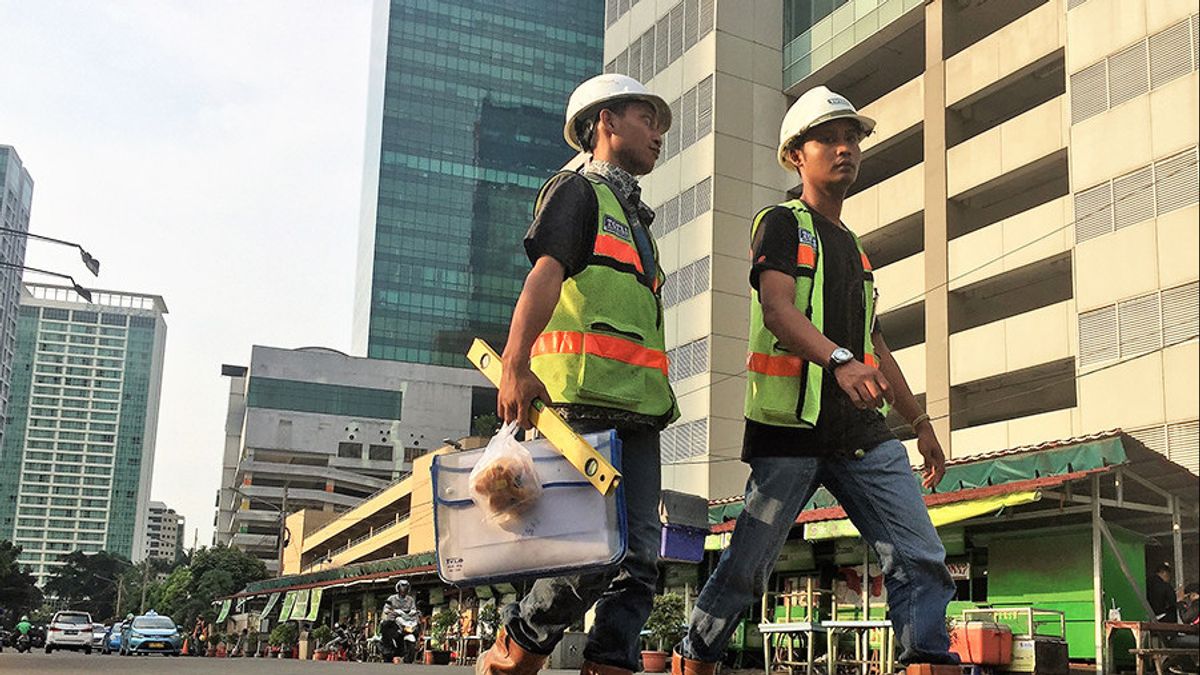JAKARTA - Compared to the period before the Asian economic crisis in 1998, Indonesia's economic growth was relatively lower after entering the 2000s period. During 2000-2018, the Indonesian economy grew at an average of 5.3 percent per year, lower than the average growth rate of 7.0 percent in 1980-1997.
That is the report of the Ministry of National Development Planning / Bappenas in the 'Diagnosis of Indonesia's Growth: Priority Strategies to Boost Economic Growth' released this week.
It was stated that the performance of economic growth which tended to slow down compared to the previous period caused Indonesia to be unable to quickly catch up with the level of welfare, which was described by the level of gross domestic product (GDP) per capita, neighboring countries.
The decline in the gap between the GDP per capita of Indonesia and Malaysia and Thailand has tended to be stagnant in the last decade. Vietnam and the Philippines have even begun to catch up with Indonesia's per capita GDP level.
Meanwhile, China was able to more than double its per capita GDP in just ten years.
The slowdown in economic growth was caused by structural, not cyclical, factors. This means that the slowdown in growth is caused by a decrease in the productive capacity of the Indonesian economy as indicated by potential output.
Bappenas itself shows that the potential GDP is currently in the range of 5.1-5.3 percent with a downward trend. At the same time, Indonesia is encouraged to become a high-income country.
"Indonesia can enter into a high-income country in the next two decades, but on the condition that economic growth grows above five percent. To be able to achieve these targets, it requires structural reform policies that are appropriate and sustainable, "said the institution led by Suharso Monoarfa.
Productivity problemsOne of the main reasons for the decline in potential GDP growth is low productivity growth. Low productivity mainly occurred in the agricultural and service sectors.
Low productivity in the agricultural and service sectors indicates problems in the structural transformation process in Indonesia. In an ideal structural transformation process, a country will experience a transition process from initially being dominated by agriculture, then switching to the manufacturing sector, after that, services.
Indonesia's manufacturing sector is more productive than other sectors of the economy, but still not productive enough to compete globally. Indonesia has lagged behind in making more complex products that require more advanced technology. There has been little diversification of exports in recent decades.
For example, 50 years ago, Thailand and Malaysia's exports were also dominated by commodities, but since then they have managed to diversify. Currently, their exports are dominated by manufactured products, especially electronics.
The English, Chinese, Japanese, Arabic, and French versions are automatically generated by the AI. So there may still be inaccuracies in translating, please always see Indonesian as our main language. (system supported by DigitalSiber.id)













